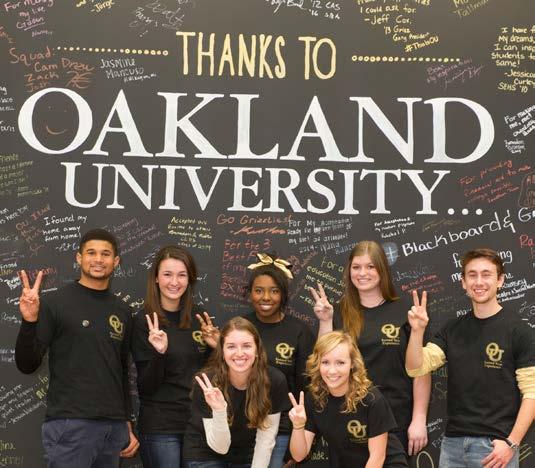Vol. 17 No. 2 March 2020
TABLE OF CONTENTS
1 Located at the center of Rollins College’s campus in Orlando, the Kathleen W. Rollins Hall is being renovated to house academic and student affairs programs, including the career center. (Photo by Scott Cook)
Academic–Career Integration: A Symbiotic Infusion “..staff sought to transform campus culture by infusing career- and life-planning education and resources into as many parts as possible of the student experience.” Tricia Zelaya-Leon, Director of Career Development, Rollins College Career center professionals feel pressure from external constituents to help students get jobs immediately upon graduation, yet students often fail to engage with these resources early or often enough to support career placement. Recent data have shown students typically visit career centers irregularly and only during their final months on campus (Hudson & KleinCollins, 2018). At Rollins College, upperclass students were satisfied with the career center’s services, but by the time they visited, it was almost too late for real progress to be made. In 2015, only 17 first-year students from a cohort of 493 voluntarily made appointments with career advisors. Understanding that engagement with a career center can have a positive impact on student satisfaction, retention, and graduation (Cuseo, 2005), we made the integration between career preparation and academic advising the focus of the college’s Quality Enhancement Plan (QEP).
into as many parts as possible of the student experience. Similarly, the staff at the Rollins career center were motivated to develop new and innovative ways to engage students earlier and more often.
Through R-Compass, the QEP, staff sought to transform campus culture by infusing careerand life-planning education and resources
In 2019, four years after the launch of R-Compass, 80% of Rollins’ first-year students are engaging with the career center. R-Compass has become a
Phase I: First-Year Infusion Career center staff leveraged partnerships with academic deans and faculty allies to develop the Career Liaison Program to increase their interactions with first-year students. Each liaison is assigned between three and five course sections, and they work with faculty to identify students’ needs. The liaisons subsequently visit the class to discuss those specific areas with the students. They also reach out to the students individually throughout the semester to offer virtual and one-on-one major and career-related guidance.
3
Academic–Career Integration: A Symbiotic Infusion Rollins College explores new ways to get students engaged with its career center.
A CSI-Themed Chemistry Laboratory Experiment for First-Year Students Merrimack College pilots themed FYE courses to integrate more academic content into the first-semester curriculum.
5
Explore Technology: A Meta-Major for Undecided Students Virginia Tech introduces a meta-major for incoming students who are interested in multiple colleges or majors.
8
Second and Transfer Year Experience: Remembering the Forgotten Middle Children Oakland University develops engagement programs specifically for second-year and transfer-year students.
WWW.SC.EDU/FYE/ESOURCE




